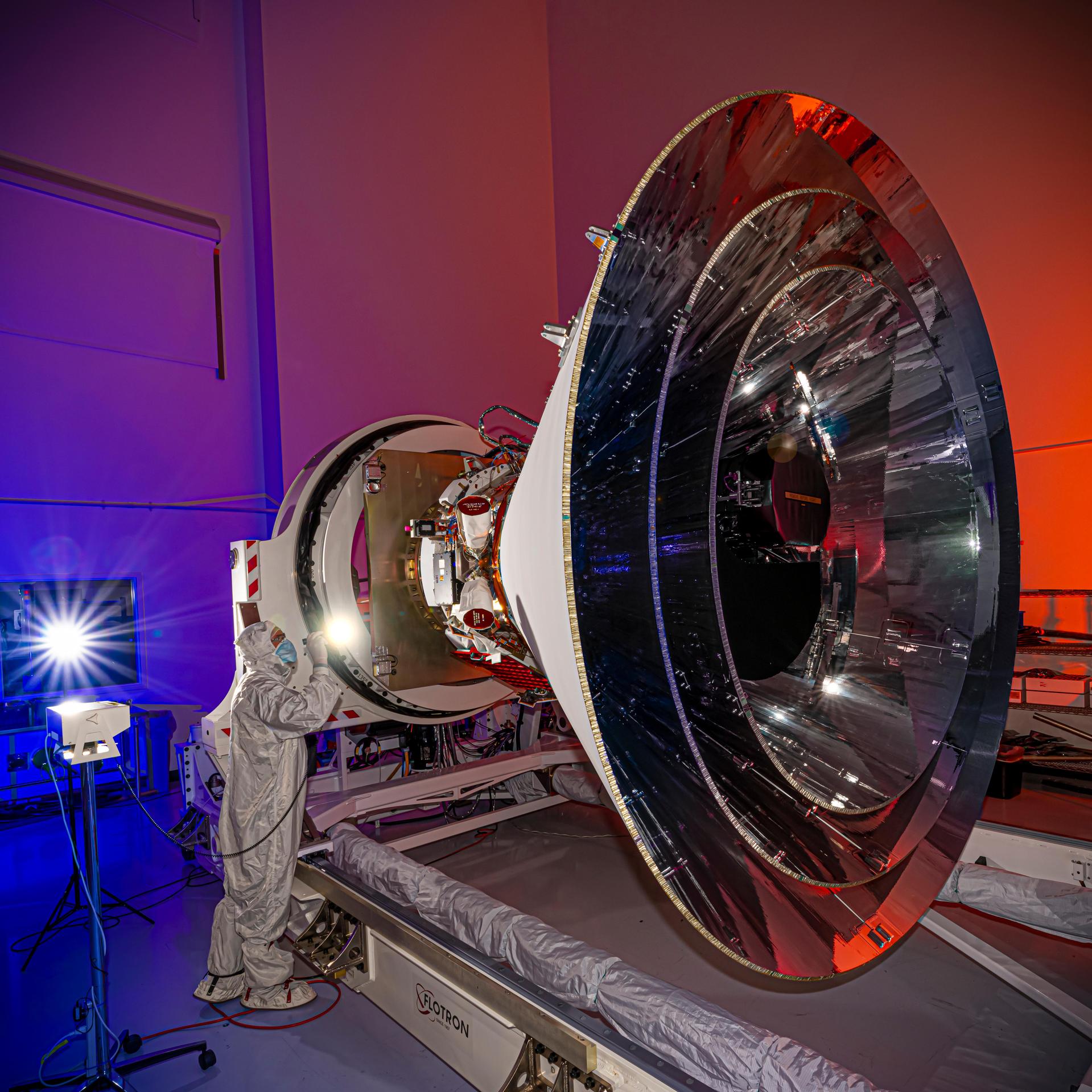
NASA’s SPHEREx (Spectro-Photometer for the History of the Universe, Epoch of Reionization and Ices Explorer) observatory, the size of a compact car, utilizes a wide-field aluminum telescope.
One of SPHEREx’s most striking features — its series of three nested conical photon shields — helps it stay cold and see faint objects. The mission’s infrared telescope and detectors need to operate at around minus 350 degrees Fahrenheit, about minus 210 degrees Celsius, partly to prevent them from generating their own infrared glow, which might overwhelm the faint light from cosmic sources.
The entirely passive cooling system, using no electricity or coolants during normal operations, is indicative of SPHEREx’s simple and robust design, which maximizes efficiency.
The design of SPHEREx also contains several features proven effective on previous missions, including its 7.9-inch (20-centimeter) aluminum telescope with a 3.5° x 11° wide field of view. The observatory will sweep across the sky, taking about 600 exposures each day that can be combined to create an all-sky mosaic. Every section of the sky will be imaged 102 times, each time using a different color filter that blocks all wavelengths except one. Combining those images, scientists can see the total emission from that section of the sky or look at an individual wavelength. This method was demonstrated by NASA’s New Horizons to obtain spectral images of Jupiter and Pluto.
